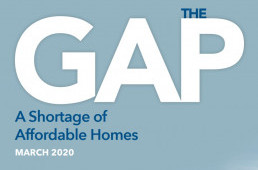
May 8, 2020 | by Michael Wilt
Categories: Affordable Housing, Rental Housing
In March, the National Low Income Housing Coalition (NLIHC) released a report highlighting the continued struggles of extremely-low income renters (households earning 30 percent or below the area median income).
First, there is a nationwide shortage of seven million affordable rental homes for extremely low-income renters. An affordable rent is considered no more than 30 percent of household income going towards housing.
And second, 71 percent of the nation's extremely low-income renters are severely housing cost-burdened. This means they spend more than half of their incomes on rent and utilities.
The report breaks down its findings by state. Below are five key points from the data specific to Texas.
Specific data for each state can be found here.
The report concludes with recommendations to increase housing availability for the lowest-income households. These include maintaining the national Housing Trust Fund, preserving the Project-Based Rental Assistance program, expanding rental assistance programs, increasing investment in new affordable housing, and preserving the existing supply of affordable homes including properties financed through the United States Department of Agriculture (USDA) Section 515 program.
On the House blog posts are meant to provide general information on various housing-related issues, research and programs. We are not liable for any errors or inaccuracies in the information provided by blog sources. Furthermore, this blog is not legal advice and should not be used as a substitute for legal advice from a licensed professional attorney.
TSAHC reviews all blog comments before they are posted to ensure a positive experience for our online community. Off-topic comments; hostile, derogatory or deliberately insulting comments; and comments specifically promoting goods and services will not be posted.
Approved comments will be published in their entirety. Personal information will not be removed unless it pertains to someone other than the person submitting the comment. For more information, please see our Comment Posting Guidelines.
To remove a previously submitted and published comment, please contact Anna Orendain at [email protected].
If you have a question regarding any of TSAHC's programs, please contact us.
